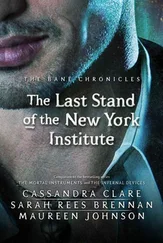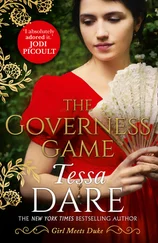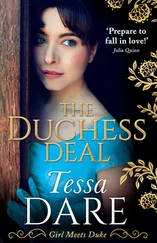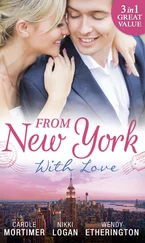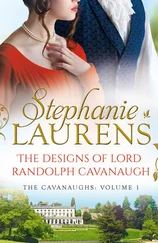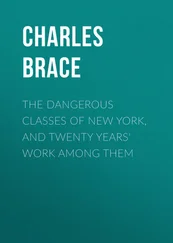I ran into Malcolm Barbour in Los Angeles in 1976, when I was working on the television series I created, “James at 15,” and he was working for a production company. In 1989 I saw his name listed as coproducer of “Cops,” a docudrama series. I still remember a story he wrote in college about a penniless young artist in love with a beautiful dancer in Paris. I can picture the girl, with her long blond hair, walking in her black ballet shoes over the fallen wet leaves of the streets along the Left Bank.
Abruptly and with no fanfare, my college life ended in February 1955, an anticlimactic finish that came out of season because I lost a semester—and almost my life—after the car crash the summer before my senior year began. When I passed my last exam—in, of all things, geology (still using New York as our laboratory, we studied rock layers of the Palisades on the Hudson)—my college career was over. Of course, I could attend the graduation of the class of ’55 in June; otherwise, I’d get my diploma in the mail, which seemed even more unreal, as if I’d simply sent away for it from a catalogue.
No longer in college and not yet launched on a job, I felt in limbo, like a man without a country. I rationalized that I still had business at Columbia, or at least the excuse of one last semi-official tie: I’d submitted a short story to that year’s fiction contest of The Columbia Review , giving it to Sam Astrachan, who was now one of the editors. I nurtured hopes of a prize, or at least publication, which I thought might seem like my own graduation from Columbia.
Sam called me a week or so after the semester break to tell me my story had come in second, but the winning story was so long it would take up the whole issue, so no others would be published. He invited me to the West End for a beer, my consolation prize. He understood how I felt and was sympathetic without being condescending, as if we were both grown literary men who could take such blows in our stride as we moved ahead to create the next work. He led me on one of his long walks down Broadway, and I clasped my hands behind my back as he did, feeling like an accepted member of the writing fraternity. It was in that time of my defeat and his compassion that we really became friends.
Now that I was leaving, I began to think with nostalgia of the friends I had made at Columbia, guys I had gotten to know from Spec and the dorms and classes, and then from the literary life of the college. I realized most of them were Jews. In fact, the only exceptions were the Englishman Barbour and Mike Naver, who I thought at first was Jewish because he came from New York and most of the other guys from the city were Jews. It was not until I knew him more than a year that I learned Nave’s roots were Italian Catholic.
At the high school I went to in Indianapolis, Jews were a definite minority and stayed within their own social structure, except for several Jewish boys and girls who each year, by some unspoken and unconscious social mechanism, became part of the In group of thirty or so kids who were the athletes and leaders of the class. I was good friends with Ferdie and Ads in high school, the Jewish boy and girl who were part of the In gang of my own class of ’50 (in fact, I’d been madly in love with Ads), but I knew next to nothing about their religious or cultural heritage.
At Columbia I felt like the minority kid as a WASP from the Midwest, something of an oddity who was anyway accepted and befriended by these Jewish students from New York. I was flattered when Joe Berger took me home for a Shabat dinner with his Orthodox parents in the Bronx, and for the first time in my life I perched a yarmulke on the back of my head (terrified that it might fall off and be regarded as a sign of disrespect), listened to prayers in Hebrew, and ate chicken soup with matzoh balls. Riding back on the rocking subway, Joe and I spoke not of our cultural differences but the common problem we shared that cut deeper than the rituals of religion and ethnic roots: being the only child of doting parents.
I admired the savvy and intelligence of New York Jews, and envied their early, ingrained love of learning and unashamed respect for literature, music, and the arts. I also appreciated the kind of compassion I got from these friends, as demonstrated by Sam Astrachan in my time of disappointment. I identified with Jews as outsiders, since part of me always felt that way myself, despite all my efforts to be In. The kid born with an urge to write, which means a tendency and talent to observe, almost by definition is outside the society he sees and describes. I felt more kin than alien to my new Jewish friends. Perhaps most important of all, I was grateful to them for accepting and befriending me, the WASP outsider from the sticks.
Harold Kushner, in his reunion address to the class of ’55, observed that “half of us were bright Jewish kids from Brooklyn and Queens who wanted Columbia to help us transcend our parochial origins and gain admission to the greater American scene … and the other half of us were high school hotshots from the Midwest who hoped that Columbia would teach us to pass for New York Jewish intellectuals.”
Marion Magid, who came to Barnard from the Bronx and whose parents were immigrant Russian Jews, believes that “the cultural encounter of Jews and goyim , New York and Midwest, was the great experience of the fifties in New York.”
On her first day at Barnard, at a tea for incoming freshmen, Marion met a student who came from the Midwest and had gone to an Episcopal boarding school. “She’d never seen a Jew before,” Marion recalls. “There was a mutual fascination between us. She’d recite the names of her relatives—American names—and I’d give her back names of my relatives from Russian Jewry. It was a fructifying encounter, a much more crucial kind than the European-American encounter. Now it’s become a syndrome, a reigning cliché, like Woody Allen and Diane Keaton. You can’t live it now without knowing you’re some kind of social phenomenon, but then it was unmapped terrain. It was like embarking on a voyage of discovery.”
This cultural voyage of discovery led me to a real voyage to Israel shortly after college, where I sent dispatches to The Nation and traveled the country from Eilat to Haifa, working on kibbutzim as a shepherd, a hay pitcher, and a fruit picker. I talked late into the night with a couple my own age who lived on a kibbutz near the Dead Sea, hearing the husband’s explanation of coming to Israel as a reaction to his sense of isolation as a Jew when he walked through the Christmas-lit streets of Manhattan, knowing he was outside all that. Yes, I said, for I too had felt outside, and I felt a kinship with this young guy, and his country.
On one of my walks down Broadway with Sam Astrachan after he had told me my story failed to get The Columbia Review prize, I said something rueful and self-deprecating that he especially appreciated. It made him laugh, and he stopped walking and put his arm around my shoulder with brotherly affection.
“Wakefield,” he said, “you’re a Jew.”
I smiled, feeling proud and elated. The illumination from a streetlight on one side and the glow from the plate glass window of a Rikers late-night restaurant on the other made a pool of light where we stood in the middle of the sidewalk. There was a warmth about the moment, a festive aura. I felt, at last, I had graduated.
I couldn’t get past the receptionists. When I went on my job search after college, the receptionists who barred my way from interviews at New York’s great newspapers blended together into one gorgon-like image: a grim woman with a beehive hairdo wearing cat’s-eye glasses studded with rhinestones, her red lips pursed in disapproval and rejection. Clutching the manila envelope of clippings I had published in my summer jobs at the Indianapolis Star and the Grand Rapids Press , I slunk away in dejection. I’d thought this would be a snap.
Читать дальше

